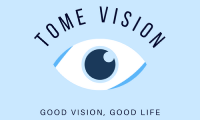The History and Evolution of Eyeglasses
Introduction:
Eyeglasses have become an essential part of our lives, allowing us to correct vision impairments and enhance our overall visual experience. But have you ever wondered about the history and evolution of these handy visual aids? Let’s take a trip down memory lane and explore how eyeglasses have evolved over the centuries.
Ancient Origins:
Eyeglasses can trace their roots back to ancient times. The earliest evidence of vision correction tools dates all the way back to ancient Egypt and Mesopotamia, where people used magnifying glasses – essentially crude forms of lenses – to enhance their vision. These early attempts at improving eyesight laid the foundation for the development of eyeglasses.
The Birth of Eyeglasses:
The development of eyeglasses as we know them today can be credited to the brilliant mind of an Italian inventor named Salvino D’Armate. In the late 13th century, D’Armate created the first wearable eyeglasses by combining two convex lenses with a wire frame. This revolutionary invention allowed individuals with vision impairments to see more clearly, marking a significant milestone in the history of eyeglasses.
Evolution of Frames:
Over the centuries, eyeglasses frames have undergone numerous transformations, evolving from early wire frames to the stylish designs we see today. In the 18th century, eyeglasses frames began to incorporate arms that rested on the ears, allowing for a more secure and comfortable fit. Materials such as wood, leather, and even animal bones were commonly used for frame construction during this period.
Modern Innovations:
As technology advanced, eyeglasses kept pace with the changing times. In the mid-19th century, spectacles with spring-loaded hinges were introduced, increasing durability and ease of use. This innovation prevented the frames from stretching out and helped keep the glasses secure on the wearer’s face. Later, the introduction of acetate frames in the early 20th century opened up a world of possibilities in terms of color, pattern, and design.
Lens Advancements:
While frames drew attention, lens technology also progressed significantly. Glass lenses were common until the mid-20th century, when the advent of plastic lenses revolutionized the eyeglass industry. Plastic lenses were not only lighter but also shatter-resistant, providing enhanced safety and comfort. Additionally, new lens designs, such as bifocals and multifocals, helped individuals with different vision needs, eliminating the need for multiple pairs of eyeglasses.
Modern-Day Eyeglasses:
In today’s fast-paced world, eyeglasses have become more than just a vision aid; they are also a fashion statement. Frames come in various shapes, sizes, and materials, allowing individuals to express their personal style. Additionally, technological advancements like anti-reflective coatings, photochromic lenses, and blue-light filtering options have further increased the usability and functionality of modern glasses.
Bullet List:
– Ancient Egyptians and Mesopotamians used magnifying glasses as early attempts at vision correction.
– Salvino D’Armate invented the first wearable eyeglasses in the late 13th century.
– Eyeglasses frames evolved from wire frames to include arms resting on the ears for a more secure fit.
– Materials such as wood, leather, and animal bones were commonly used for frames in the 18th century.
– Spring-loaded hinges were introduced in the mid-19th century, increasing durability and ease of use.
– Plastic lenses replaced glass lenses in the mid-20th century, offering improved safety and comfort.
– Bifocals and multifocals eliminated the need for multiple pairs of eyeglasses.
– Modern eyeglasses serve as a fashion statement, with frames available in diverse shapes, sizes, and materials.
– Technological advancements like anti-reflective coatings and blue-light filtering options enhance the functionality of modern glasses.
Conclusion:
From the humble magnifying glasses of ancient times to the sleek and stylish eyeglasses of today, the history and evolution of these visual aids have been nothing short of remarkable. We owe a great debt to the inventors and innovators who tirelessly worked to improve eyesight correction, ensuring that individuals with vision impairments can live their lives to the fullest. So, the next time you put on your favorite pair of eyeglasses, take a moment to appreciate how far this indispensable accessory has come.
